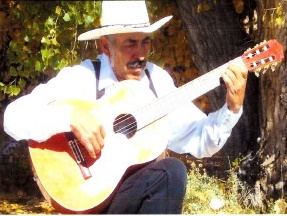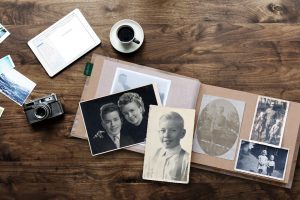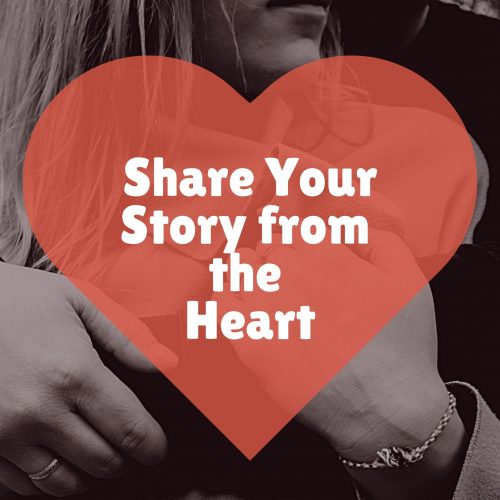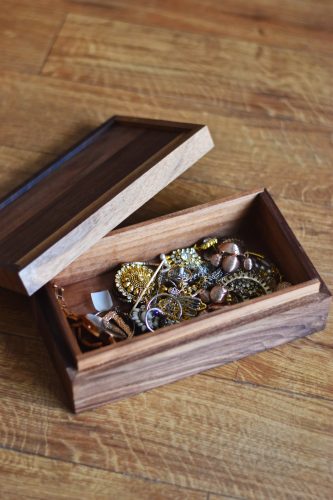| School attendance is a high profile current topic and rightly so. We spend so much of our childhood in school, it has a profound effect on our likes, dislikes, character, love of learning, and friendships. These experiences provide a motherlode of material for memoir writers and family historians. When I’m doing oral history interviews or memoir coaching, I find that school memories are always a rich source of content. We remember the GOOD, cherish, and laugh about it. We shudder at the BAD and often still carry the scars. We might count the UGLY among our most embarrassing memories, our funniest, or any number of other emotional boxes we shove our stories into. Working on your family history or memoir? Think about experiences with teachers and schools, both GOOD and BAD. I had many great teachers, a few indifferent ones, some who were pretty average, and yes, some who were just bad. But, doesn’t this describe most of us at different times in our career and lives? We might never know the back stories of those whose lives intersect our own, including teachers and schoolmates. So, I have compassion, healthy boundaries, and have tried to learn from each of these educational realities. You might have been shamed by a teacher frustrated that you didn’t “get” their favorite subject matter. Geometry anyone? How you handled this, or didn’t, and moved forward is an important part of your story. Maybe you were encouraged by another teacher who saw something positive and excellent in you? Perhaps it was wordsmithing skills in composition class, or your face lighting up (not literally- that might have been on the BAD list) over a chemistry experiment, an art assignment, building something useful in shop class or having a great understanding of history. Whatever it was, these experiences shaped you. I’ve been an educator much of my life and love to see those “aha” moments when an idea becomes real and personal for someone. It happens in workshops, on zoom calls, even in feedback on social media posts. The lovely thing is, I’m always learning right along with you! Think back on your school experiences. There was GOOD, there was BAD, there was UGLY! Each of these is full of story, dig in and write about them. Want to join others interested in writing their story? I’ve opened up a new private FaceBook group, Family History & Memoir Writers Fellowship, just for you! We’ll encourage each other in our storytelling journeys, have fun, share stories, crowdsource solutions, and prompt each other with inspiration and great ideas. We’re stronger and more creative together. Click the link above to check it out and I’ll see you on the inside! Karen |
Blog
How to be a Family History Clutter Cutter

A friend posted this statement today in a memoir writing discussion thread: “Tomorrow is too late, live today” Then she asked, “Would you agree?” Wow! I can’t stop thinking about this, it’s such an interesting thought and question.
Carpe Diem! Seize the Day!
So many people become stuck in the mire of perfection. Someday, when “x” happens, if this is settled, then I’ll…. We’ve all talked this way. But then…decades go by and you’ve missed out on precious time and memories.
While of course it’s wise to plan and implement for today, tomorrow, and the future, there are opportunities and decisions that must be acted on in the moment. Over analyzing can keep us stuck. That said, it is never too late to take the next right step! As for me, I thrive on balanced living in all three time zones, past, present, and future (I do work with memoir, after all). This one life is a priceless gift and I don’t want to waste a minute of it. So today is simple, sweet, and designed to get you future authors and family historians un-stuck.
Here’s one big Seize the Day tip, it’s like a NEON YELLOW easy button, that can help you move forward with writing your memoir or family history:
#1: REPURPOSE things you’ve already created to get a jumpstart on your memoir content. Can you really do this? Sure thing – letters, recipes, journal entries, newspaper clippings, even descriptions of gifts you’ve made can form the foundation for a new chapter. You can include them as is, expound on the material, or use them as memory prompts. Create a themed collection if you like and make a simple photo book.
Photo book companies send out frequent discounts and can be an easy way to share the story of your keepsakes. Think beyond just photos, you can add story text, recipes, use your imagination. Try Shutterfly, Blurb, Mixbook, Snapfish, Picaboo to name just a few…search for the sales codes.
Now is the ideal time to begin thinking about a simple project to create as a gift for upcoming holidays, birthdays, anniversaries. Books like these gain instant heirloom status and are the secret sauce in memorable gift-giving.
By sharing the story behind family history keepsakes everyone benefits. No one gains if they stay shoved in a box. It is not the item that is of value but the memories behind it. Are you getting the most mileage from these materials you can? Do a little digging and help your family gain a rich understanding of their background and history. You’ll have fun in the process.
Bonus tip: Bet you thought of at least a couple items in your family history collection that you can do this with. Now, go and IMMEDIATELY APPLY these ideas to your treasures while the thought is fresh. Set a timer for 10 minutes and write out everything that comes to mind. Organize it later!
Need help? Feel free to contact me anytime and we’ll brainstorm some options. I’d love to hear from you!
Karen
Memoir Spotlight on a New Mexican Musical Folklore Legend

Cipriano Vigil -A New Mexico Legend – Mini Memoir
I was born and raised in the small village of Chamisal, New Mexico where I received my early education. Part of that education was in the local schools, but most importantly, it came from my mother and grandparents, and from the local musicians. One of the most influential learning experiences was gathering at the “Resolanas”, the sunny side of a house, to play music. Several musicians of all ages would gather there to practice and also to share music and songs. For some it was a learning experience, for others it was a practice session. These musicians became known as the “Resolaneros.”
This was a time before television and the local dances were a major form of entertainment. Local musicians played and at a very young age I would sneak out of the house in order to go to the dances to learn the music. I would wait until I thought my mother was asleep, and for added protection I turned my jacket inside out as a disguise. Then I would creep out the window and run to the dance. My reason was to learn the music of my people. I would stand in front of the musicians with a little pad of paper and a pencil and draw the frets of a guitar and takes notes where the musicians placed their fingers. I watched how they strummed. I observed, I took notes, and I learned. Then…………. I would make my way home through the dark night, climb quietly back in through the window and find…………. My mother waiting for me with a belt! How do mothers know everything? Still, as she fell back to sleep, I would remain awake and as quietly as I could I would practice what I had seen, and in this manner I taught myself how to play.
Music was simply a part of my culture and many of the boys could play instruments. The balmy summer nights were perfect for adventure, music, and fun! We’d plan where to meet, and then, again with mothers asleep, we’d rendezvous at the appointed time, steal a neighbor’s chicken, take off up into the mountains, and there, under the pine trees, we’d roast the chicken over an open campfire and play music and sing until dawn. Each of us shared with the others what we had learned and we built a repertoire.
There was a local man who was very knowledgeable, knowing the old songs from days past. I so wanted to learn these and found a way to get him to teach me. It so happened that in addition to his love of music, he also had a love of wine. And so trades were made! I supplied the wine, and he sang the songs for me. I collected, in my head. I did not yet know how to either read or write music, so I memorized. I memorized a lot of songs.
Sometimes I would try in [vane] to get the older boys to teach me. “No,” they would yell, “go away. You are too little.” But I wasn’t and it made me angry and I yelled back, “Someday I will be better than all of you,” and for emphasis I went after them with my slingshot.
A turning point came when I got older and was playing professionally without any formal training. I was completely self taught. A lady approached me at a break between sets and asked if I would play a song for her. “Sure,” I said. She handed me some sheet music. I looked at it in complete confusion. What side was up? Which down? What were these symbols? I realized I had a weakness. A bachelor’s degree, two master’s degrees and a PhD followed.
I received my baccalaureate degree in Music Education from Highlands University. Upon completion of my undergraduate work I received a scholarship to pursue a master’s degree in Bilingual Education, again from HIghlands University. Another scholarship followed. This time from the Mexican government. In Mexico I studied at the National Institute of Fine Arts where I obtained a second master’s degree, this one on Ethnomusicology. While studying in Mexico I would go to every and any place where music was played, including dance halls and bars. From these excursions I absorbed the knowledge of so many different styles of music.
I began my career as a professor at Northern New Mexico College in 1980, and retired from that institution in 2004. It was during this time that I also completed my doctorate in Ethnomusicology, which I received in 1988. This same year I became the Chairperson of the Fine Arts Department, a position I held for ten years. Because of my love of music and teaching I have continued to work at NNMC as a part time instructor in folk music.
My early background and training in music has instilled in me a passion for preserving and disseminating the folk music of northern New Mexico. From my several presentations at the Smithsonian Institute in Washington, D. C., to the elementary school classrooms of New Mexico, and cowboy poetry gatherings in Elko, Nevada , I have done thousands of performances and presentations. I have brought this music to various regions throughout the U.S. and have performed in several states in the country of Mexico. These presentations consist not only of traditional New Mexican folk music but also La Nueva Canción (the new songs), a style that originated in South America.
I have also preserved this music on recorded CDs. I have self published a four volume set of traditional New Mexican folk music, with accompanying CDs that I use with my students at NNMC. Another self published work is a collection of my own compositions written in this traditional style as well as the style of La Nueva Canción. I also self published a manuscript of sixty-seven of my compositions for violin and guitar, which I use with my folk ensemble class. I have written several compositions for theatrical performances and for films. Recently I have composed and recorded several one movement symphonic works named Poemas Musicales (musical poems). UNM Press is currently publishing a book I wrote of the folklore of New Mexico which will be accompanied by twenty-one long playing CDs.
In my many presentations at the local schools I bring part of my collection of over three hundred musical instruments from around the world. I play them and give the students a little history of the instrument. It is a joy to me to see their expressions as they become excited about music, their culture, and the culture from which the various instruments have evolved.
My presentations and performances have won me several prestigious awards. These include being honored as a Living Treasure, the Governor’s Award, the New Mexico Endowment for the Humanities Award. I have been nominated three times for the National Heritage Award for outstanding work in maintaining and preserving traditional folk music.
My son, Cipriano Pablo Vigil, and my daughter, Felicita Vigil Piñón, also perform with me in concerts. They learned and have been practicing these same traditions and music since a very young age. My son and daughter have been performing with me for about 25 years.
Recently, my granddaughter Marisol Vigil (14 years old), my grandson Mitzael Piñón (8 years old), and my youngest grandson Alonzo Vigil (3 years old) have been performing with us on stage.
My repertoire consists of several styles of music and songs that branch out to all the different varieties found in northern New Mexico. My specialty is the traditional folk music, including the ritual music, and my original compositions, which falls into the category of La Nueva Canción (the new song form).
Here are links to Cipriano’s music and his cigar-box guitars, enjoy!
http://newmexicofolkmusictreasure.com/
http://newmexicofolkmusictreasure.com/…/cigar-box-guitar/
(Article shared with permission from Rosabelle Marie, moderator of the FaceBook page New Mexico History/Albuquerque Reminiscing/Photos, https://www.facebook.com/groups/1303732000019068 you can connect with Cipriano at https://www.facebook.com/cipriano.vigil)
I love to share memoir examples to inspire you to save your own history. Share this example with someone you’d like to encourage to write their story. Remember, a memoir can be as long or short as you like, just begin. Happy memoir writing!
Got Memories but Feel Overwhelmed with How to Share Them?

P.S. I’m opening up 1:1 coaching (10 spots left)
This coaching is for family history or memoir writers who know they want to share their story but are overwhelmed or stuck with how to get it done. You have the stories and memories in your head, but struggle with getting them down on paper.
Ready to kick the overwhelm to the curb? I got you!
Three months, one goal to jumpstart your memoir, me by your side to help you every step of the way.
We will be looking at:
- * What you want to accomplish with your story during these 3 months, as well as going forward.
- * Where you’re stuck or limiting yourself.
- * What are your goals for your story and what do you need to bring them to vibrant life?
- * Weekly concrete steps to achieve forward movement toward your goals.
- * What tactics and tools to use to make your story shine.
- * Figuring out together the best storytelling strategy for you and your unique story.
- * How to make everything we accomplish during our three months of 1:1 work last BEYOND and help you continue forward.
Basically, this coaching if for you if you’ve known you want to share your story (or that of a family member) but have become stuck with the size of the goal or the sheer quantity of material to work with. We handle all kinds of stuck, so let’s talk about it!
You will set your goal with my guidance and I’ll be beside you every step of the way over a period of three months to help you achieve it.
How it works:
- * We’ll talk once a week on Zoom for an in-depth 1 hour session.
- * You’ll have email access to me between sessions, including for critiques and questions.
- * You’ll have phone access to me for a 15 minute check in between sessions should you need it.
- * I will review whatever material you have and give a professional editorial evaluation, looking for strengths and weaknesses that we can address in relation to your goal. We’ll talk through any fixes or improvements that can help you tell your story in a way you can be proud of.
How to sign up:
Since 1:1 work is a big commitment for both of us, let’s make sure we’re on the same page and that there’s a good personality fit. If you’re interested in working with me, shoot me an email at karen@rememberingthetime.net and let me know what you’d like to achieve in a three month memoir coaching jumpstart. If I believe I can help you, we’ll set up a time to chat over the phone or Zoom call and I’ll send you a detailed overview of the Life Legacy Signature Coaching program.
I’m looking forward to visiting with you about your story!
Karen
Want to Make a Change? Share Your Life Story from the Heart!

Memoir writers and family historians typically have loads of great stories to share. On scraps of paper, partially used notebooks, journals of all shapes and sizes, napkins, envelopes. And boxes of photos. And letters. And recipes. You get the picture. One of the most common questions I’m asked is “How do I go about editing all that stuff? Where do I start?” This is often the sticking point and can become a slog through concrete without help. I’ve shared many ideas in workshops, on this blog, and with coaching clients to help you curate all that wonderful material. Take a look through the archive for inspiration.
My goal is to help you get the most out of your story and ensure you’re presenting it in a clear, enjoyable manner that showcases your unique voice.
I’ve written free blogs, given free workshops, and spoken with so many people who are convinced of the importance of sharing their story. I’ve enjoyed working lunches and many cups of coffee while encouraging people with the nuts and bolts of getting their story from their head and heart onto the page or computer screen.
However, I’ve found that sometimes readers, clients, and fellow human beings just need something more focused to get them un-stuck. They want more – specific attention to their unique story, motivation, accountability, and more one on one help to make progress with their story.
So…I began distilling all those years of experience into a simple individual coaching program. This is designed to give you two options to jump start your memoir or family history project, making real progress toward an end goal you can be proud of. Because I believe in the innate value of life stories and experiences I developed the Life Legacy Signature Coaching Program.
The coaching comes in two flavors, 3-month and 6-month. Each is designed to support you with weekly individual meetings, phone calls, and email communication where we work directly with your story. Yes, even if it’s just in the idea stage or languishing in those boxes of material I mentioned. There is help for that!
Life Legacy Coaching is designed to provide you a practical, creative framework for learning how to gather material from your life history, how to focus, and different structuring techniques. Together we’ll enhance your story telling skills to build your memoir or that of someone else. You’ll make steady progress and receive encouraging, constructive feedback on your weekly writing goals as you refine your own unique storytelling voice.
I love to honor your life and memories by helping bring order and meaningful expression to your story. This program is only open to a limited number of clients because of the individual work we’ll do digging into your story and crafting it into a thing of beauty. 2021 promises to be a year of new opportunities as we emerge from this cloud that has been oh so hard but has also helped us focus on the love of friends and family.
Interested in talking about your project? Let’s talk story. I would love to have the opportunity to work with you and give you the tools, confidence, and encouragement to share your story. This is your opportunity to be a part of a very special small group.
What does the book journey look like? It’s not a fast process, each step is part of the ride and is vital to developing your best book. The great thing is, here’s where partnering with a coach can help you maximize your efforts and enjoy the trip. Guess what? There’s help and guidance for every step of this process. Get in touch and tell me about your story vision and goals. You can reach me at karen@rememberingthetime.net. I’m looking forward to hearing from you!
Here’s your bulleted , short roadmap to your best book just FYI:
- Collect your material, either your own writing or work with an oral historian who is skilled in conducting memoir/family history interviews
- Decide on your basic keys – who, what , when, where, why
- Write the stories – don’t edit yet – I know it’s hard
- Edit your document 5 -6 times, adding sensory detail, arranging the story till it flows well, continuing to hone your theme
- Developmental editing, either on your own or get help, professional or writing group feedback
- Revise and correct your book as per feedback
- Set your book manuscript aside for at least a few days so you can view it with fresh eyes in the next step
- Review, proofread, and edit your story again – Read it aloud to yourself, work with self-editing tools like Grammarly, the Hemingway app or even just Google docs or Word spelling and grammar checks
- Work with a copyeditor to further clean up your text – fresh eyes with professional experience will be efficient at polishing your work
- Proofread again
- Submit for publication if self-publishing, order a proof copy and review again, making corrections as needed
- Market your book if for public consumption
- Publish final manuscript
- Celebrate your great accomplishment!
- Market again, and again
Have another story idea? You may be hooked, have fun with it!
What’s in a Name? Marvelous Funny Monikers

Birth, death, and taxes are inevitable, so this seems like the perfect time to focus on new life and inject a little needed humor into your day. Family history and memoir work can be rich in name mining.
Soon to be parents are up to their necks in baby name books. To prime the thought process, here are some choices you may NOT want to consider, but they’ll keep you laughing. If your grandmother or grandad sported one of these monikers my apologies in advance, I hope you’ll take this in the spirit of fun!
Check out this collection of 1918 Extinct Names that Sound Hilarious Today collected from Nameberry.com:
Can I hear it for Lurline: 58 girls or Roswell: 45 boys ? Or how about the twins:
Dicy: 11 girls
Nicie: 11 girls
Boys named Dude: 8 boys today might be whipping around every time someone under the age of 30 calls out to a friend.
For you genealogy and family history buffs, laugh your way through the funny genealogical records at Legacy Tree.com.
In American colonial times, names often reflected qualities or characteristics that parents wanted their children to emulate, like Charity, Patience, or Virtue. Preserved was a name associated with salvation – preserved from sin, death, or destruction. However, Thomas and Mercy Fish should probably have given a little more thought to the burden their son would be forced to bear when they named him Preserved Fish.
If Mr. Preserved Fish could time travel from 1731 to today I wonder what names he might find bizarre or humorous? Portobella? Baby? Hashtag? Any name spelled backwards – just – no.
Glance through the hilarious collection of unbelievable actual names at TheBump.com. Here’s a sample:
“Apparently there’s a family at my gym with the last name Bean. They have girls who are named after different types of beans, like October, Boston and Seven. Seriously.” — shadow

Number 16 from Parentology.com’s list of 20 weirdest baby names is memorable but I’m pretty sure this gal will have to spell it out for the rest of her life.
16. Zephyrine
“Zephyr” is the ancient Greek term for the west wind. Zephyrine is a feminized version.
Both my daughter and daughter in law sport lovely derivatives of the classic name Alexandra. This is sometimes confusing when speaking in a hurry as all of us have tripped over the similar names more than once. So far, the ladies have kept a great sense of humor. In our modern age of that ever-present digital boss lady who shall remain nameless here, an entire new past time has arisen of head-whipping “What?” when someone calls “A….!” in their home. I find myself snickering a bit evilly when this happens. I grew up in the era of Karens and sat through my entire school career with at least one other like-named lass in every classroom. And now there’s a meme about us, oy!
Then, there’s the classic Johnny Cash song A Boy Named Sue. I remember singing this, loudly and badly, with my dad on road trips. Now, that’s a good memory! The song reads like a how-to manual for bad parenting but we loved Cash’s sense of humor and grit. I’d love to know how he got the idea for this song.

What funny or unusual names are hiding in your family history? I’d love to hear them with a photo of their proud owner. Share them on our social media pages on Facebook and Instagram and tell us the backstory! (Makes a great story for your memoir too)
What’s Your Most Priceless Possession?

What is your most priceless possession? Today is the anniversary of the discovery of the largest diamond ever found. Discovered in Pretoria, South Africa in 1905, it weighed in at a whopping 1.33 pounds. That’s 3,106 carats! Take a second look at your engagement ring if you’re wearing one, it’s maybe a fraction of a carat, at most 1 carat if your spouse to be was financially well-off. Can you imagine a diamond this big?
If you’ve lived for any length of time of this planet you know that objects can be lost, stolen, or destroyed. What can’t be lost, except by mental incapacity are your memories. These are yours, to replay, to cherish, to share, sometimes to re-bury. They are yours alone and cannot be taken from you, they are the only thing that is uniquely yours.
Back to the shiny rock. This diamond, like most precious things, was shaped and polished to bring out its beauty. It was cut into several different gems, one of which is known as the Star of Africa, or Cullinan I. The article states that the stones “…are on display in the Tower of London with Britain’s other crown jewels; the Cullinan I is mounted in the British Sovereign’s Royal Scepter, while the Cullinan II sits in the Imperial State Crown.” You can read about the discovery of this precious stone on history.com.
Take a look at your memories in a different light as if they are a precious object. Protect them, share them so their beauty and the story behind them can be known by others, especially your family. Consider this treasure that is uniquely yours. Now, imagine 116 years into the future, when your great grandchildren will be able to read a story about your life and history. I can promise you it will be more intensely relevant and interesting to them than the story of a shiny rock.
